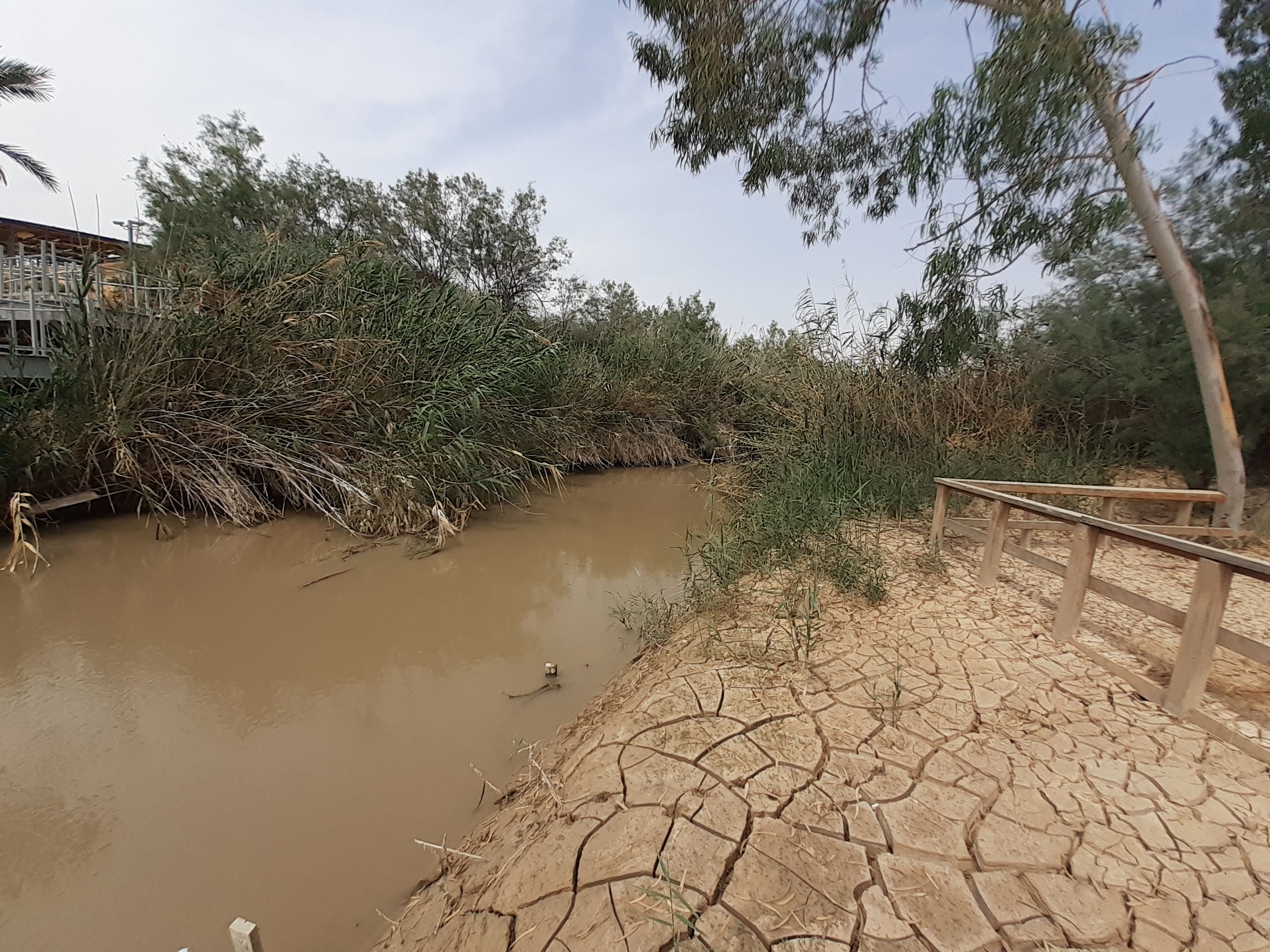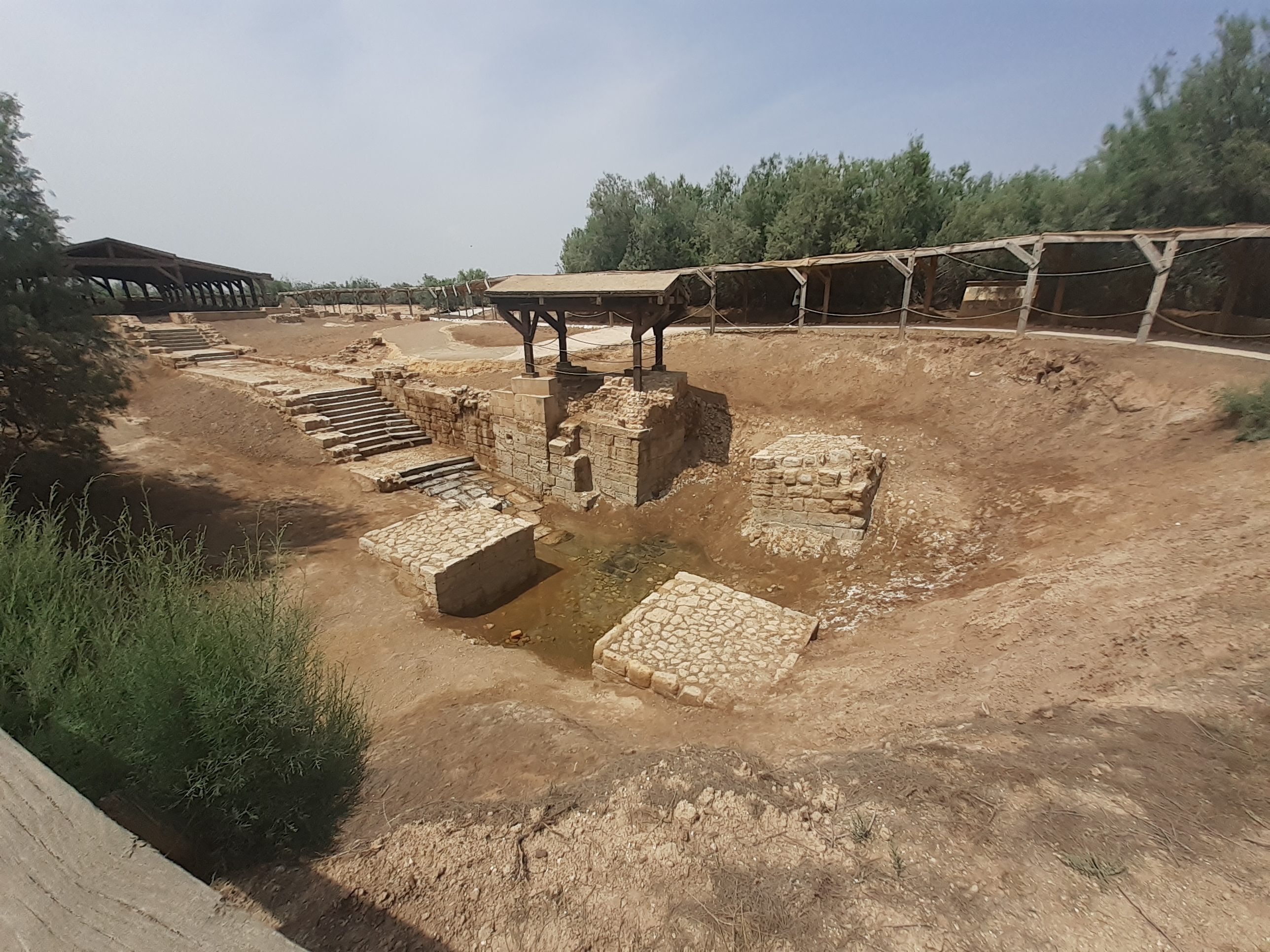Mk 1:1-8 John teaches that people must change their lifestyle and turn away from wrongdoing if they wish to be forgiven by God. He baptises them, immersing them in the River Jordan, to show that their wrongdoings have been ‘washed away’ by the running water. Their immersion in the River Jordan also symbolises a new start and a new freedom, just as the Jewish people, after their Exodus from slavery in Egypt, had waded into the Jordan as they crossed from the eastern desert. They, too, had started a new life in the ‘promised land’ of Canaan over a thousand years earlier.
Many people from Judaea and Jerusalem flock to hear John. The road they travel from Jerusalem drops steeply for 3000 feet / 1000 metres as it crosses the hot, barren wilderness and descends to the valley floor of the River Jordan (see Fig. 1).

John the Baptist (Matthew 3:4)
(Bartolomeo Veneto, 1470-1531)
Jn 1:19-28 John is baptising at Bethany, on the east bank of the River Jordan when the Jewish authorities in Jerusalem send priests and levites (who minister and assist in the Temple) to question him (see 1 on Map 3). John states clearly that he is not the Messiah.
Bethany beyond the Jordan
John the Baptist could have picked any point along the River Jordan to baptise the crowds. But his chosen spot – on a winding stretch of the river, 5 miles / 8 km to the east of Jericho – was full of religious and historical significance to the Jews who flocked to hear him (see Map 3).
When John decided to baptise at the place now known as Bethany beyond the Jordan (to distinguish it from another Bethany, near Jerusalem), the site was already well known by those who read the Jewish scriptures. It was regarded as the spot where the Jewish prophet Elijah had crossed the River Jordan shortly before he was taken up to heaven (see 2 Kings 2:8).
It was widely believed in John’s day that the prophet Elijah would return to herald the coming of the Messiah or Christ – God’s anointed one (see Malachi 4:5). So it was a highly symbolic act for John to baptise at this very spot and to point his followers to the coming of Jesus, whom John declared to be “the Lamb of God, who takes away the sin of the world!” (John 1:29).

The River Jordan at Bethany beyond the Jordan
Visitors to Bethany beyond the Jordan, in modern-day Jordan, can view the extensive archaeological remains that have been excavated in the vicinity of Elijah’s Hill (Tell Mar Elias) and Bethany (Tell al-Kharrar) since 1996. These include a 3rd century Roman building with a beautiful mosaic floor (which may have been used by early Christians) and a 5th century Byzantine monastery with numerous chapels and pools for baptising believers. In addition to the gold-domed Greek Orthodox Church of St John the Baptist (opened in 2011 on the site of a Byzantine church) and the large Catholic Church of the Baptism of Christ (opened in 2025), there are also the remains of four other early Byzantine churches with baptistries close to the river (where modern facilities for baptisms have also been provided).

Remains of an ancient baptismal site at Bethany beyond the Jordan
John baptises Jesus
Jn 1:29-36 The next day, John sees Jesus coming towards him and testifies that Jesus is the one for whom he is preparing the way: “Look, the Lamb of God, who takes away the sin of the world!” (John 1:29) (see Isaiah 53:7, Exodus 12:3-11 & 21-23 and 1 Corinthians 5:7).
Matt. 3:13-17 Jesus (who, at thirty-one or thirty-two, is about six months younger than John) has come from Galilee. John baptises him in the River Jordan in the summer of 26AD. The Spirit of God descends on Jesus like a dove, and a voice from heaven says, “This is my Son, whom I love, and I am very pleased with him” (Matthew 3:17).
Jn 3:22-36 The following summer, John is baptising in the River Jordan at Aenon, near Salim (see 2 on Map 3), “because there was plenty of water there” (John 3:23). Jesus and his disciples are also baptising nearby in “the area of Judaea” (John 3:22). One of John’s disciples complains that people are flocking to see Jesus. John replies, “He must become greater, and I must become less important” (John 3:30).
When did the ministries of John and Jesus begin?
The year in which John the Baptist's ministry began is uncertain from the Biblical account. Luke tells us that John began his ministry during "the fifteenth year of the rule of Tiberius Caesar." (Luke 3:1) He recalls the baptism of Jesus by John in the River Jordan and adds, "When Jesus began his ministry, he was about 30 years old." (Luke 3:23)
Tiberius Caesar ruled the Roman Empire after the death of his stepfather Augustus Caesar, who died in 14AD. It's often assumed, therefore, that John the Baptist's ministry began in 29AD - 15 years after the death of Augustus Caesar.
The Roman historian Suetonius, however, records that Tiberius became co-Emperor alongside the elderly and ailing Augustus in 12AD, two years before becoming sole Emperor on his death in 14AD. The 15th year of Tiberius's reign can therefore be dated more accurately as starting in 26AD.
Theologians generally agree that, following his baptism by John, Jesus's ministry began in either 26AD or 29AD, and his death occured on either Friday 7th April 30AD or Friday 3rd April 33AD. As Jesus was born in 5 or 6BC (shortly before the death of Herod the Great in 4BC), he would have been 31 or 32 years old in 26AD. This date (which we have adopted in The Bible Journey) is in close agreement with Luke's assertion that Jesus was "about thirty years of age" when he began his ministry.
